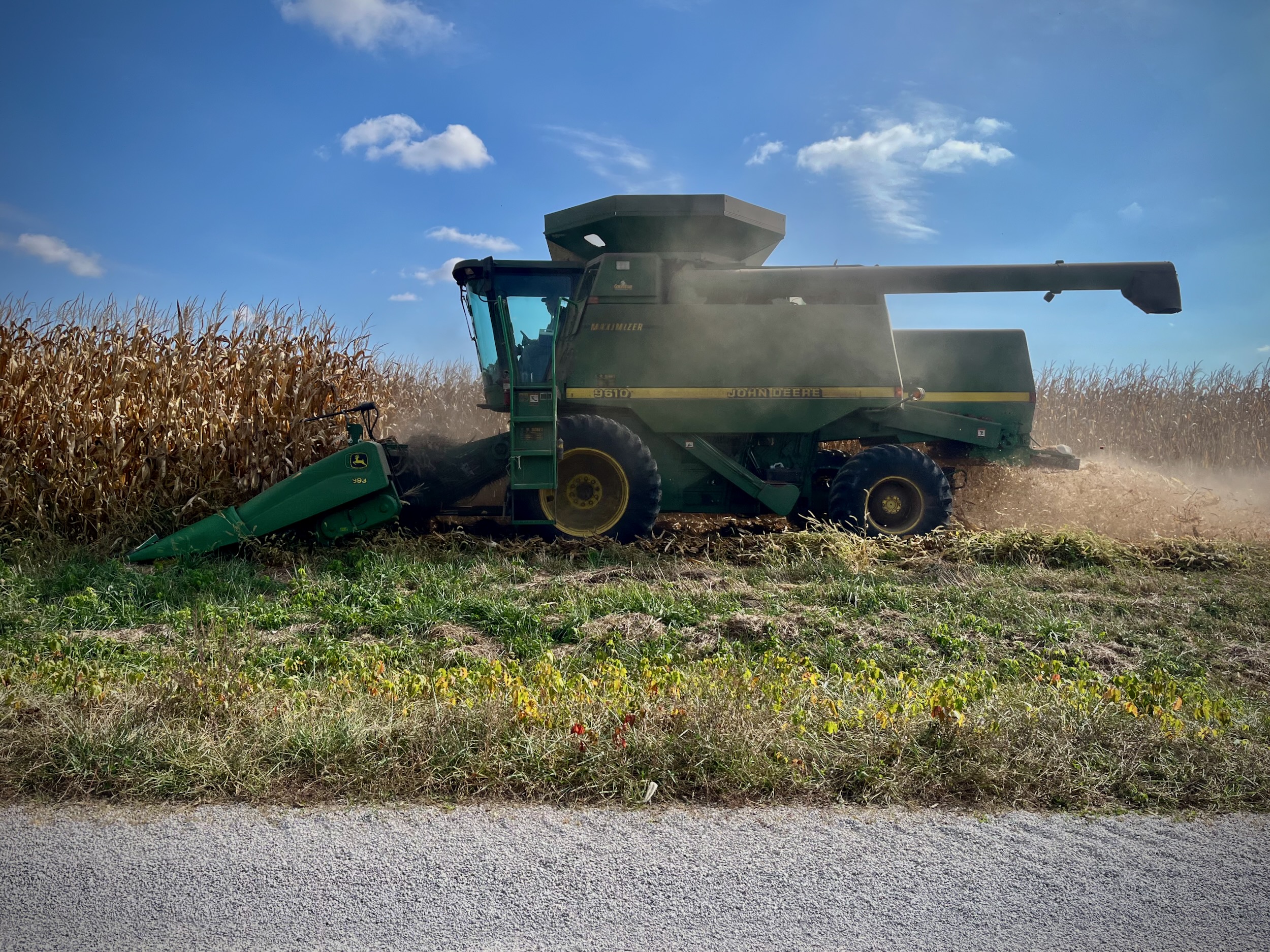(slowly falling) on hydrolysis, harvest, and the thin slope of life
Water is patient gravity. At fifty-five molar it outnumbers every other molecule, a silent pull that wants to dissolve the world. Every cell lives just above that descent, balanced on a narrow shelf between explosion and stillness. Too far from equilibrium and bonds would tear apart under their own potential, too close and nothing would move. Life occupies the ridge where motion continues without losing form.

The harvester moves through the field, breaking stalks, collecting kernels, and leaving chaff. Inside each cell the same choreography repeats in miniature. Energy is gathered by cutting bonds and routing the fragments into new forms. In water, the universal solvent, hydrolysis performs the work, while enzymes decide where the fall stops.
Pyrophosphate (PPi) is one of the small levers that makes this control possible. When an enzyme links two molecules it often spends a nucleoside triphosphate and releases PPi. Another enzyme, pyrophosphatase, immediately splits PPi into two inorganic phosphates. Because the product disappears as soon as it forms, the original reaction rarely reverses. Direction arises from this quiet erasure, see Figure 2.
Hydrolysis of Pyrophosphate (PPi)P₂O₇⁴⁻ + H₂O → 2 HPO₄²⁻ ΔG°′ ≈ –33.5 kJ mol⁻¹
Mg²⁺ ions stabilize the negatively charged transition state, positioning water for nucleophilic attack on the bridging oxygen. Hydrolysis cleaves the phosphoanhydride bond and yields two orthophosphates, making the reverse reaction improbable in vivo.
PPi’s structure explains its influence. Two phosphorus atoms share oxygen bridges and hold metal ions such as magnesium or manganese. The geometry invites catalysis. When water attacks one bridge the molecule collapses, releasing energy and closing the path behind it. Each hydrolysis is a controlled fall, a one-way valve that lets chemistry flow in only one direction. Without such valves the network would drift aimlessly toward equilibrium, and time itself would have no orientation.
This mechanism may have been one of life’s earliest inventions. Before ATP became the universal bookkeeping molecule, sulfur-bearing thioesters could have powered condensation reactions on mineral surfaces. Those reactions might have produced PPi, a simpler energy currency that stored and released potential through cycles of hydration and dehydration. Over time, nucleotides added specificity and regulation, while PPi’s rhythm remained underneath like the percussion of an older song.
The logic still lives in modern lineages that hover near equilibrium. Certain Archaea use PPi to pump protons across their membranes. What began as a spontaneous irreversible step in prebiotic chemistry was later engineered into a controllable gradient generator. These cells thrive in hot springs and salt flats where energy is scarce and balance is everything. Their ion pumps still echo the architecture of the Archaean sea, using ancient chemistry to measure time through flow.
A ciliate drifting through pond water follows the same rule at a visible scale. Rows of cilia beat in rhythm, each stroke powered by ATP hydrolysis, each movement a descent balanced by recovery. The organism senses gradients in temperature, light, and chemistry, harvesting difference as information. Its navigation is metabolism expressed as motion, the conversion of molecular directionality into behavior.
The harvester in the field performs a related kind of sensing. The driver reads gradients of color, light, and density across the rows, steering toward yield. Diesel oxidation drives the machinery, grain collects, entropy increases, yet feedback keeps the pattern from collapsing. Both ciliate and human are harvesting energy by following gradients, transforming imbalance into meaning. Whether enzyme or engine, organism or operator, the principle is the same: capture part of the fall and turn it into continuation. In both cases, forward motion becomes a measure of time.
At the molecular level, the cytoplasm is a managed landslide. Enzymes channel torrents of potential energy, catching molecules before they dissolve completely. The balance is delicate. When coordination ends, the slide completes itself. Equilibrium finishes the descent that life has been slowing since its origin.
Our lives are versions of this same balance. Each decision is a small redistribution of potential, a modulation of entropy delayed through care. Families, nations, and ecosystems all manage their descent through cooperation and feedback. When balance falters, the fall accelerates—into conflict, scarcity, and waste. When balance holds, we experience peace. On an autumn evening, tea steaming beside the fire, the world feels briefly stable. The year decrescendos toward rest, yet within that calm, reactions still hum. Hydrolysis still pulls. Life still holds its place above the bottom.
To live is to sustain that fragile suspension—to hold gravity and heat and hunger in slow equilibrium long enough to call it meaning.